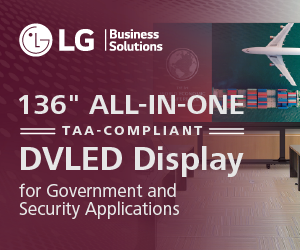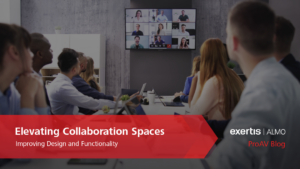by Apryl Lamberti | May 23, 2016 | Digital Signage, Education, Events, Uncategorized
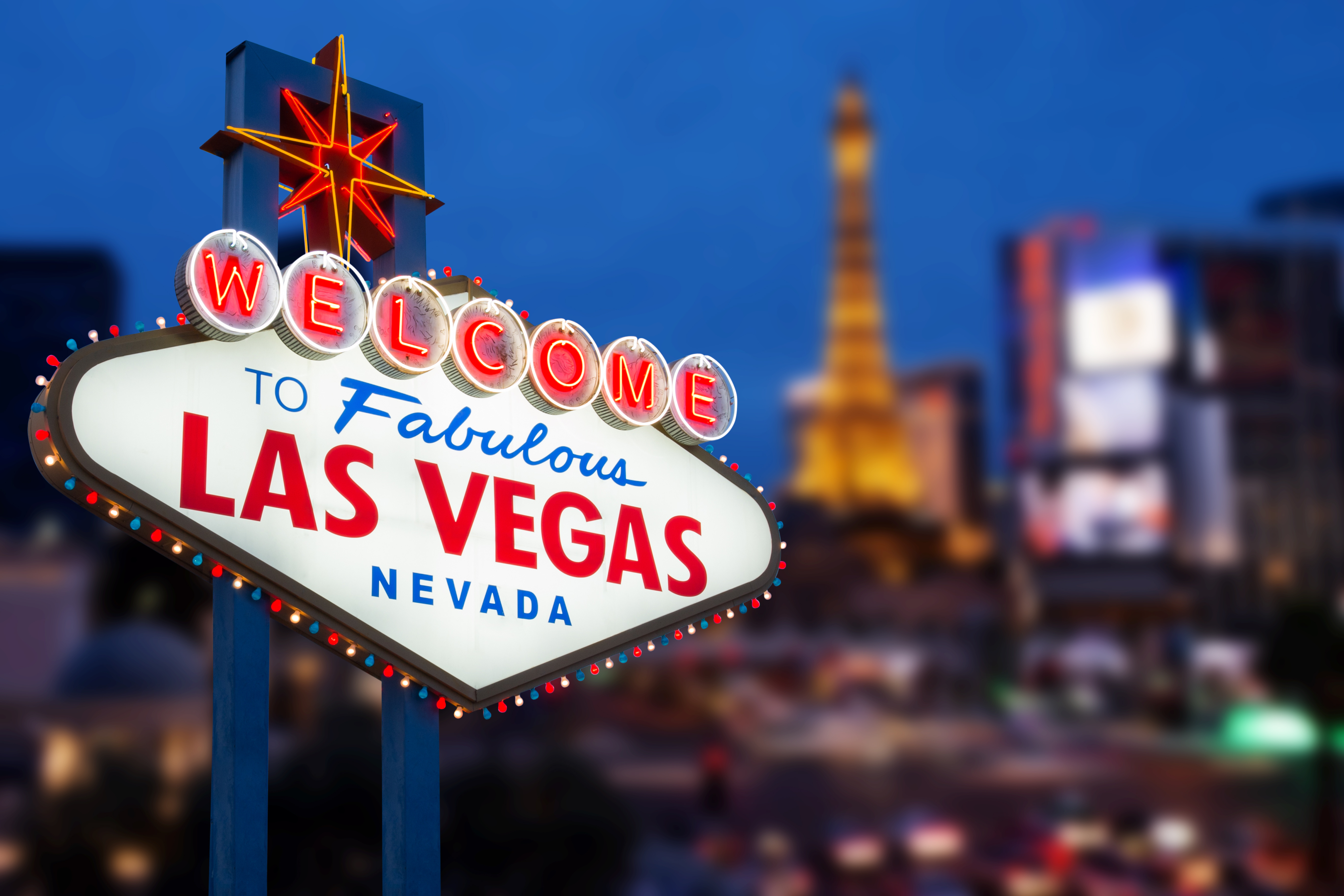
Since moving to Pensacola in 2014 after living in major markets like New York and Atlanta for so many years, flying out of a smaller airport isn’t so bad—with no security lines I can breeze into the airport, grab my regular parking spot right near the elevator in the garage right across from the terminal… and “Who’s bedda than me?” as they say in New York.
Visiting Vegas this time for the NAB Show, (National Association of Broadcasters), it’s the perfect event to showcase Samsung’s new broadcast video wall display solution, the UD55E-S. Looking forward to hearing feedback from dozens of major TV networks and their engineering teams over the next two days, as I deplane I’m immediately greeted by a number of Samsung displays  before we even leave the gate area and I’m vividly reminded how rich this destination is for digital signage as it pounces on visitors at every turn. Countless displays clamor for your attention- larger than life images and dazzling graphics promoting the latest acts and long-standing shows on the strip not to mention tantalizing jackpot tickers and even slot machines right in the terminal. Checking into my hotel, Samsung video wall displays (UD Series) serve as a sleek, gorgeous digital canvas behind the minimalist and modern check-in desk to create the chic, hipster experience at SLS Las Vegas. Samsung displays, tablets and other technology are hard at work supporting the property’s mission for world class hospitality. From the lobby and restaurants, concierge lounge right down to Smart TVs in every guest room, (we’ll save that for another blog).
before we even leave the gate area and I’m vividly reminded how rich this destination is for digital signage as it pounces on visitors at every turn. Countless displays clamor for your attention- larger than life images and dazzling graphics promoting the latest acts and long-standing shows on the strip not to mention tantalizing jackpot tickers and even slot machines right in the terminal. Checking into my hotel, Samsung video wall displays (UD Series) serve as a sleek, gorgeous digital canvas behind the minimalist and modern check-in desk to create the chic, hipster experience at SLS Las Vegas. Samsung displays, tablets and other technology are hard at work supporting the property’s mission for world class hospitality. From the lobby and restaurants, concierge lounge right down to Smart TVs in every guest room, (we’ll save that for another blog).

Samsung’s UD55E-S displays are calibrated specifically for use by broadcast studios. Factory-calibrated to a low 2,800˚-6,500˚ K color temperature, UD55E-S monitors are in sync with nearly all broadcast cameras and lighting, giving you the confidence of knowing the image on your studio’s videowall is precisely what your audience at home will see. UD55E-S displays also maintain a sharp image and accurate color when viewed off-axis, and the ultra-narrow bezel-to-bezel width of just 3.5mm (about 1/8″) delivers a near-seamless videowall, with maximum impact, clarity and accuracy. In the below images taken at ISE by our VP Marketing, Melody Craigmyle in March, you can see the difference in the images through the eyes of a viewer at home watching a broadcast with a traditional video wall display (right) and UD55E-S broadcast video wall display (left). Notice how crisp and vivid the content appears on the broadcast videowall unit compared to what the majority of studios are using today.


For a limited time, we are offering special pricing on IN-STOCK UD55E-S broadcast videowall units, while supplies last. We can help you save money on the product AND reduce installation labor by more than half of typical requirements for traditional videowall panels with Samsung’s extensive factory color calibration and advanced color expert software (included free) and with every UD55E-S. Give me a call or email me today with details about your ON-CAMERA videowall application or studio set client who is ready for an upgrade and I’ll help you confirm if this solution is right for your specific project.

So whether you call it “Sin City” or “The Entertainment Capital of the World,” Vegas is totally a Samsung town!
Here’s a picture of Almo’s Business Development Manager, Apryl Lamberti and Nancy Onffroy, Samsung’s Channel Manager at NAB on the show floor.
by admin | May 16, 2016 | Education, Events, News
Recently, we asked AV respondents about their social media usage. As we suspected, a clear majority of Atlanta E4 AV Tour attendees say they use LinkedIn the most for business. They were evenly split between Facebook and Twitter as second most used social network.
When AV Respondents Check Social Media
When do you check?
6pm or later 70%
9am to 12pm 65%
12pm to 3 pm 54%
3pm to 6pm 52%
How Many Times a Day Do You Check Social Media?
Five or more 43%
One to three 39%
Three to five 19%
See the full infographic here.
How do these results match up with your own preferences? Special thanks for all those who took the time to respond to our survey! We can’t wait to see what our Boston and Dallas E4 AV Tour attendees will have to say about their social media habits. Don’t forget to join us at our upcoming E4 AV Tour!
Stay in touch with us. Check us out on Facebook, Google+, LinkedIn, YouTube, and Twitter to keep up-to-date with all our latest news, events and campaigns.
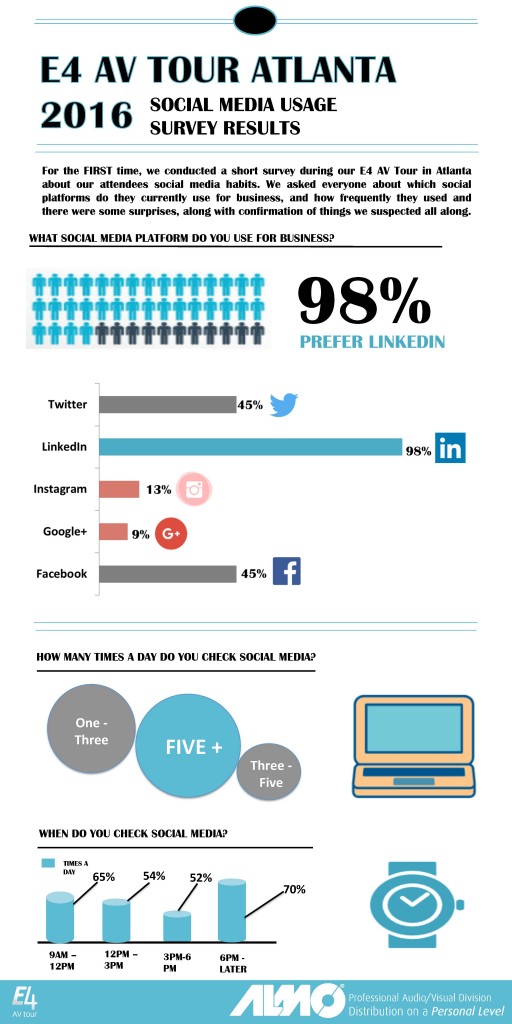
by Rob Ziv | Apr 20, 2016 | Education, Events, News

Wow; another E4 season is underway. There are so many things I enjoy about working the E4, from meeting great people, to sharpening technical skills in CTS RU certifies classes, to seeing new products up close with factory experts on hand to dig into the details. I look forward to E4’s every off-season and just wish they were longer when they do roll around. The kickoff in DC certainly did not disappoint. From a product perspective alone we saw a number of cool new items that are starting to make noise; some quite literally.
It’s not often a product creates a new market. This is exactly what Panasonic has done with their innovative Space Player. This was a huge draw at ISE in Amsterdam and the Almo E4 may have been the first time it appeared in public in the US. This highly anticipated little projector mounts to a standard lighting track and has built in SD Card slot and Wi-Fi for media playback. Being that it is about the size of a track lighting fixture, it is ideal of retail signage applications and flexible ambient techorating. Panasonic showed the unit mapped onto stationary products with active content highlighting the subjects. If you have customers looking for you to bring creative solutions, check out the video for further applications to get your imagination going. (Make sure to look for the butterflies in the restaurant.)
Another first for Almo were the ongoing live demos of the Bose F1 Flexible Line Array system. (My apologies to the 11AM Interactive E4 Experience…. perhaps we got a wee bit too loud with the EDM.) The venue’s octagonal room and dome ceiling certainly would have presented significant challenges for lesser systems. This self powered unit brings the advantages of line arrays to the portable market. Proving very popular in HOW, education, and performance spaces, the flexible vertical control makes it a great option in diverse setups and integrated systems, too.
QSC showed their super efficient Energy Star qualified SPA series of multi channel power amplifiers that provide up to 200 watts into low-z applications and 250W into 70V – and they fit in half a rack space. We’ll be hearing more about these amps as the word continues to spread.
Harman Professional brought their new interactive “virtual rack” to sit alongside their stacks of gear. This touch screen-driven self-guided demonstration allows attendees to dig deeper into many items from the extensive product families of JBL, Crown, dbx, and others. With product experts at their side, the virtual rack allowed attendees to experience a broader range of solutions than typically available on a show floor.
From the “you can teach an old dog new tricks” department, Chief brought along the new SYSAU Suspended Ceiling Projector System. “It’s just another mount” you say? Wrong! How about a system that includes everything you need for 90% of all projector installs – all in a single box. No more finding the right ceiling plate, length of extension column, trim ring, etc, etc. This makes spec’ing, quoting, and installing projectors faster – period. Plus, if you inventory mounting components, this will make life much easier. (Yes – another video.)
With so much to see and do, I’m sure I missed some of the highlights. Please share yours and I look forward to seeing on the next stop of the E4 AV Tour!
by Sam Taylor | Feb 25, 2016 | Digital Signage, Education, News
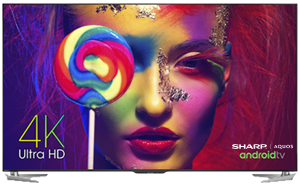
The use of 4K Ultra High Definition has skyrocketed since its commercial introduction in 2010. Professional installs of all kinds – digital signage, hospitality, corporate, education, command and control – can be dramatically enhanced due to the stunning beauty and astounding resolutions made possible with this display technology.
The worldwide 4K display market is expected to reach $52 billion by 2020 according to industry researchers. And while commercial displays are still the top use for 4K, the technology has even started to appear in the entire range of display devices we commonly use, including PC monitors, notebooks, tablets and even smartphone screens.
Here are some common questions we get asked about moving to 4K:
What makes 4K UHD such a critical display tool for commercial integrators?
A 4K UHD display has four times the number of pixels (3840 x 2160) compared to full HD (1080p) resolution. The major advantage of using 4K displays is that you can ultimately deliver a very immersive and rich experience that is in close proximity to the display without sacrificing image quality. UHD provides the ability to display finer details, amazing depth of colors and more information on a screen. As the technology matures and costs are driven down, we will see 4K screens become the norm and 1080 slowly drift away due to lack of production.
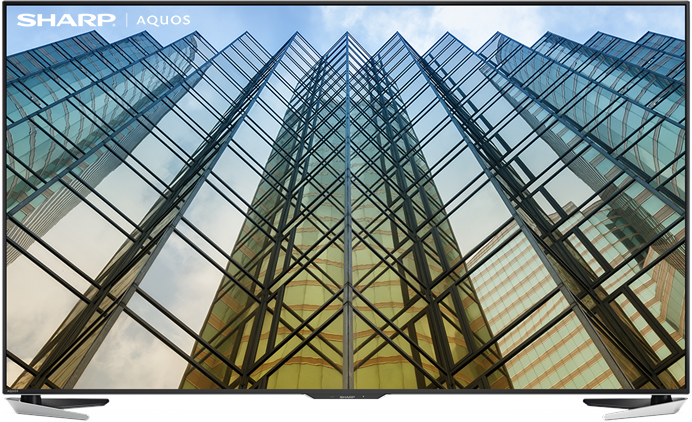
Why purchase a 4K display through Almo Pro A/V?
 Almo offers a range of 4K displays, including exclusive accessibility to the Sharp AQUOS® 70-inch display, which features the Revelation Upscaler to display all content at near-4K quality for an amazing picture all the time, no matter which source is being used. Almo also offers a host of powerful media players with high storage capability from manufacturers like BrightSign to drive the data and produce the best results based on the content that is being shown.
Almo offers a range of 4K displays, including exclusive accessibility to the Sharp AQUOS® 70-inch display, which features the Revelation Upscaler to display all content at near-4K quality for an amazing picture all the time, no matter which source is being used. Almo also offers a host of powerful media players with high storage capability from manufacturers like BrightSign to drive the data and produce the best results based on the content that is being shown.
So, what about content?
Obtaining 4K content has been the biggest 4K barrier to date, however, as the technology increases in popularity, more content is becoming available and the cost to create that content is decreasing. With Almo’s Content Creation Services, integrators have the opportunity to offer 4K standard and customized still images or full motion video content as part of an initial installation and ongoing maintenance package. This creates recurring revenue, builds margins and lengthens customer relationships.
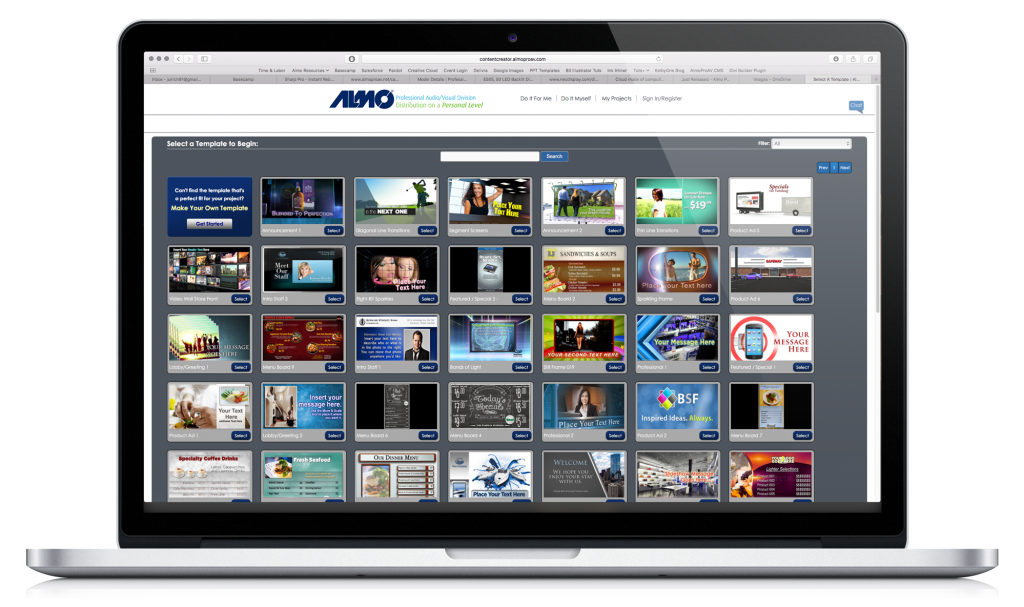
What if I need support to help select and integrate the 4K displays?
Almo has a highly specialized fleet of Business Development Managers that offer technical knowledge, system design assistance and in-depth brand knowledge about 4K displays to help you integrate the technology into your commercial installs. No other distributor in the AV industry provides this level of expertise to its partner community.
by Melody Craigmyle | Jan 26, 2016 | Digital Signage, Education, News, Uncategorized
First, if you haven’t heard of the term “techorating”, it’s not something I made up. I thought I had but after I asked my dear friends Alan and Jonathan Brawn to write a course for our E4 AV Tour on this trend I was calling techorating, they discovered it was not an original. Techorating was a catchy term coined back in 2008 by interior designer, Doug Wilson from the TLC TV show Trading Spaces, as a concept for the emergence of integrating home technology and home decor in balance with one another. Since the Brawn’s taught this course for us a few years ago, the term caught on it the AV industry and has been written about in nearly every major AV publication, including a recent article in Digital Signage Today.com. I’ve seen a lot of great examples of techorating, especially in Las Vegas where designers and architects continue to push the limits to wow audiences, attract visitors and keep us coming back for more shows, casinos, long cab lines and the ever-present linger of 2nd hand smoke. Which is why my visit to Comcast last week was filled with techorating awesomeness! It was an experience like no other, elegantly done with a playful yet bold approach – and 100% smoke free.  You enter the lobby on JFK Boulevard in downtown Philadelphia, which is the tallest building in the city, and at first it looks like any other normal lobby:
You enter the lobby on JFK Boulevard in downtown Philadelphia, which is the tallest building in the city, and at first it looks like any other normal lobby: 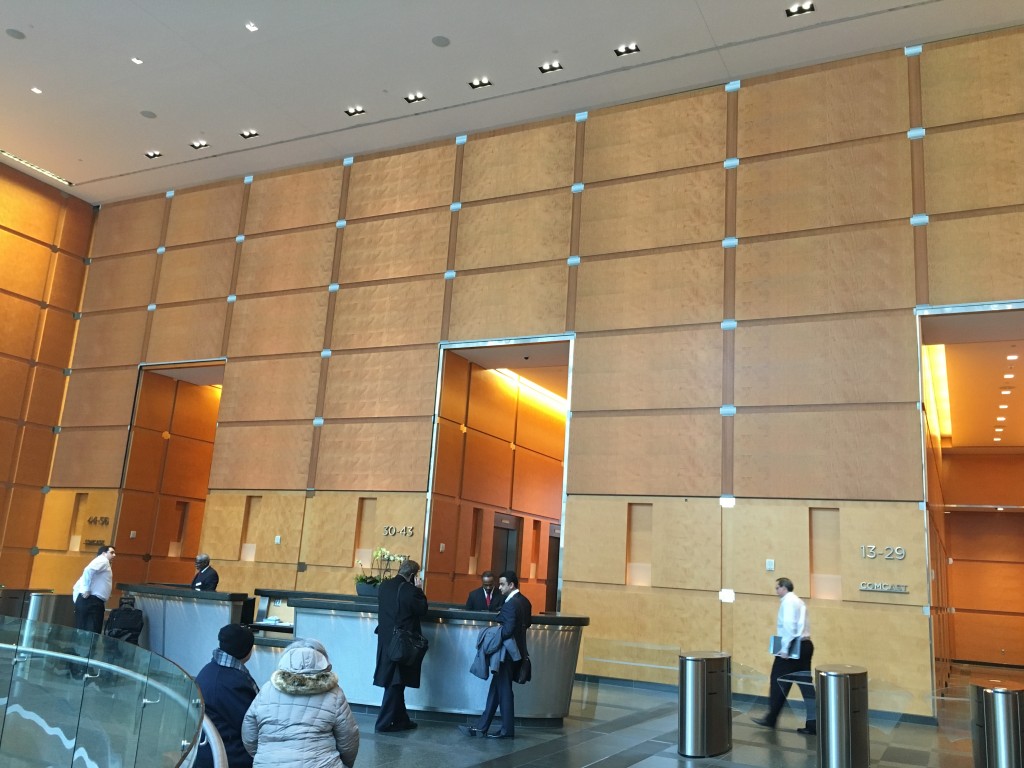 Nice ashy oak walls, silver accents, very clean and polished look. But wait, something starts to happen and…
Nice ashy oak walls, silver accents, very clean and polished look. But wait, something starts to happen and… 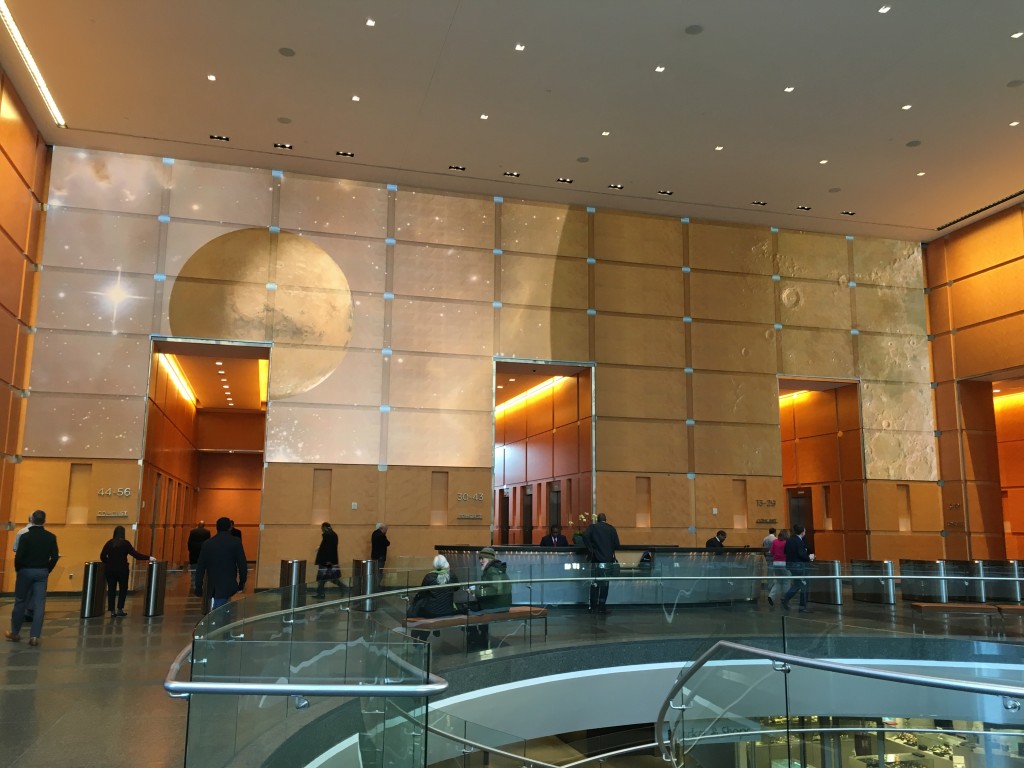 It’s not just a wall! It’s an intergalactic force to be reckoned with. No wait, it’s a water wall!
It’s not just a wall! It’s an intergalactic force to be reckoned with. No wait, it’s a water wall! 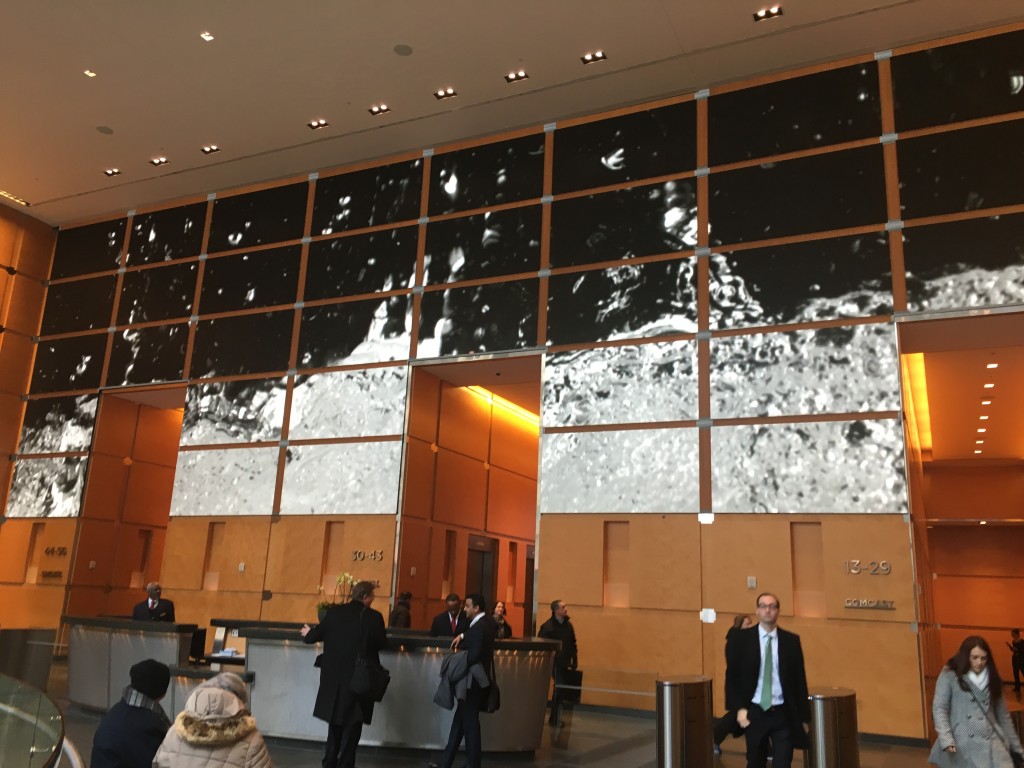 Cool stuff, right? It’s the attention to detail as well that struck me. Much of the content intertwines with the wall architecture, creating virtual joints in the places where the LED panels “join” – you can see from this shot that part of the image is a real joint and the other is silver colored pixels.
Cool stuff, right? It’s the attention to detail as well that struck me. Much of the content intertwines with the wall architecture, creating virtual joints in the places where the LED panels “join” – you can see from this shot that part of the image is a real joint and the other is silver colored pixels. 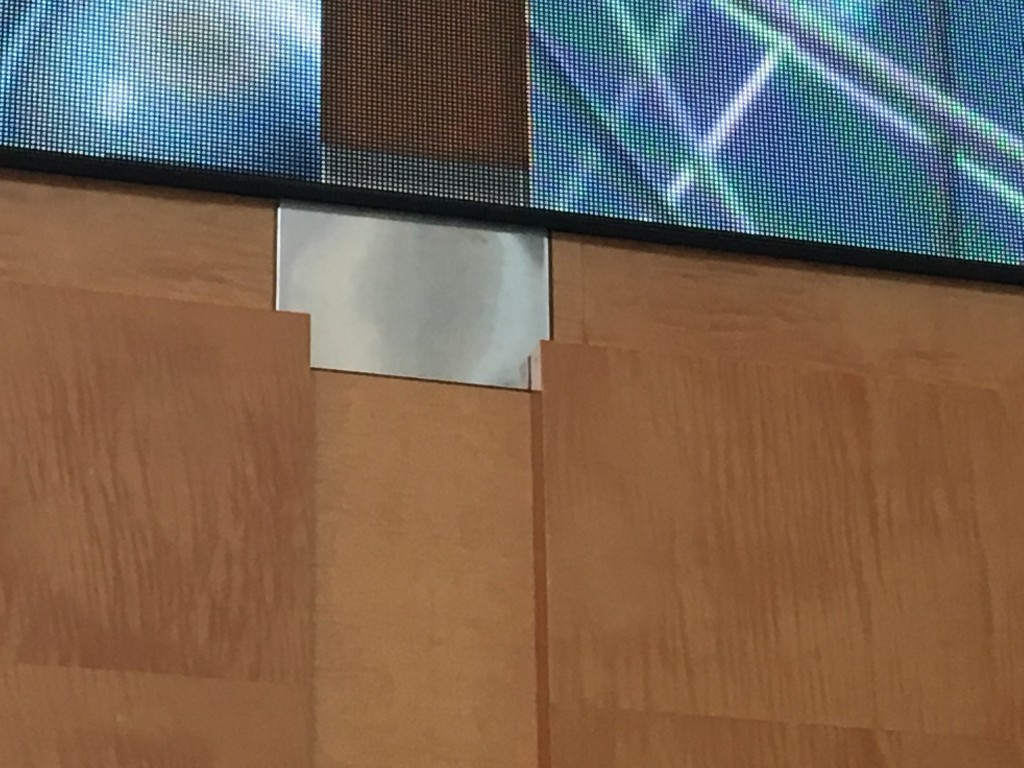 You may be wondering what I was doing lingering in the Comcast lobby. I was there on official business but I can tell you that this is one of the most visited tourist destinations in Philadelphia, so it’s not uncommon to see all sorts of people in their lobby. We launched our new Almo Connect service for our resellers to offer bandwidth, cable TV and voice services to their customers and Comcast is one of our partners (along with many other top cable providers). Why would our partners offer bandwidth services? Think about if you’re doing a digital signage deployment and you plan on refreshing high resolution content on a daily or weekly basis. You need LOTS of bandwidth! And for future proofing, think about 4K – now you’re talking BIG data coming across a network. And of course the IT people are like, “no way, not on my network!” And you’re like, “no big deal, we offer high speed internet and we can take care of everything.” Voila – the reseller makes monthly reoccurring revenue on that sale – that’s right – every single month. But back to the techorating – here’s a very cool video so you can see how they use different parts of the wall for entertainment, like this “cubical” video:
You may be wondering what I was doing lingering in the Comcast lobby. I was there on official business but I can tell you that this is one of the most visited tourist destinations in Philadelphia, so it’s not uncommon to see all sorts of people in their lobby. We launched our new Almo Connect service for our resellers to offer bandwidth, cable TV and voice services to their customers and Comcast is one of our partners (along with many other top cable providers). Why would our partners offer bandwidth services? Think about if you’re doing a digital signage deployment and you plan on refreshing high resolution content on a daily or weekly basis. You need LOTS of bandwidth! And for future proofing, think about 4K – now you’re talking BIG data coming across a network. And of course the IT people are like, “no way, not on my network!” And you’re like, “no big deal, we offer high speed internet and we can take care of everything.” Voila – the reseller makes monthly reoccurring revenue on that sale – that’s right – every single month. But back to the techorating – here’s a very cool video so you can see how they use different parts of the wall for entertainment, like this “cubical” video:
Kudos to the designers and especially to the content creators. The convergence of architecture, decorating, digital display, graphic arts done spectacularly well and I didn’t even have to walk through a casino to see it.
by Brian Rhatigan | Jan 20, 2016 | Digital Signage, Education, News
It seems flat panel displays are virtually everywhere these days and have gotten larger, thinner, lighter, and less expensive than ever. Not that long ago in applications requiring a large image a projector was the natural choice, however as flat panels have evolved you are now seeing them installed where historically it would have been a projector. I am not denying the benefits of using a flat panel display, but there are many reasons why projection would be the way to go.
For starters, let’s look at image size. Generally speaking 98” is about the largest flat panel that is readily available at this time. So in instances where an image of larger than 98” diagonal is required, projection becomes the only option to use for a single display device without the complexity of multi-screen video walls. This is pretty clear cut, but size is not the only consideration.
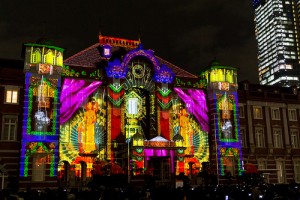 Often audio visual components are integrated into high end architectural spaces including corporate board rooms, lecture centers, training facilities, and more where the display device may not always be in use and for aesthetic reasons the client may not want to “see” the technology in the room. Most projectors are ceiling mounted and generally out of view or can be installed in a lift that can disappear into the ceiling. Projection screens also can disappear when not in use by recessing flush into the ceiling.
Often audio visual components are integrated into high end architectural spaces including corporate board rooms, lecture centers, training facilities, and more where the display device may not always be in use and for aesthetic reasons the client may not want to “see” the technology in the room. Most projectors are ceiling mounted and generally out of view or can be installed in a lift that can disappear into the ceiling. Projection screens also can disappear when not in use by recessing flush into the ceiling.
Another key consideration is cost. While flat panels have certainly become affordable, however once you get up into the larger sizes above 80”- 90” the costs can still be prohibitive in many cases where projection will often be much more affordable. For illustration purposes consider a 98” professional grade monitor at a cost of $32,679.00 compared to an installation class projector like the Epson PowerLite Pro G 6770WU which is 1920×1200 resolution at 6000 lumens available at a retail price of $5,699.00.
When it comes to unique display applications there are times when a flat panel display is simply not an option. Think about events where you have projection on floor surfaces or on buildings. With projection mapping some really unique projects can be pulled off. A really cool example of this was recently featured in a case study on the basketball arena at Pensacola Christian College using Epson Pro G projectors:

Both flat panel displays and projectors have their pros and cons, however projection is still and will continue to be a great choice for many display applications. For assistance in selecting the right Epson projector or to learn more, contact Brian Rhatigan at [email protected] or 888.420.2566 x6546.
 before we even leave the gate area and I’m vividly reminded how rich this destination is for digital signage as it pounces on visitors at every turn. Countless displays clamor for your attention- larger than life images and dazzling graphics promoting the latest acts and long-standing shows on the strip not to mention tantalizing jackpot tickers and even slot machines right in the terminal. Checking into my hotel, Samsung video wall displays (UD Series) serve as a sleek, gorgeous digital canvas behind the minimalist and modern check-in desk to create the chic, hipster experience at SLS Las Vegas. Samsung displays, tablets and other technology are hard at work supporting the property’s mission for world class hospitality. From the lobby and restaurants, concierge lounge right down to Smart TVs in every guest room, (we’ll save that for another blog).
before we even leave the gate area and I’m vividly reminded how rich this destination is for digital signage as it pounces on visitors at every turn. Countless displays clamor for your attention- larger than life images and dazzling graphics promoting the latest acts and long-standing shows on the strip not to mention tantalizing jackpot tickers and even slot machines right in the terminal. Checking into my hotel, Samsung video wall displays (UD Series) serve as a sleek, gorgeous digital canvas behind the minimalist and modern check-in desk to create the chic, hipster experience at SLS Las Vegas. Samsung displays, tablets and other technology are hard at work supporting the property’s mission for world class hospitality. From the lobby and restaurants, concierge lounge right down to Smart TVs in every guest room, (we’ll save that for another blog).



















